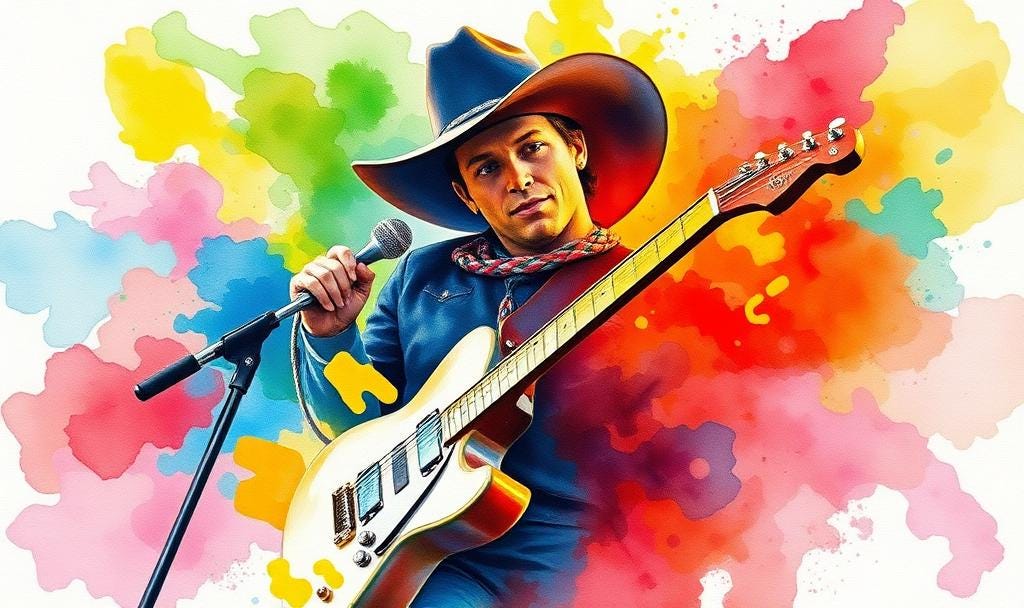This is part of my Pop Music in the ‘80s series.
When Urban Cowboy hit theaters in 1980, starring John Travolta in tight jeans and a cowboy hat, few could have predicted its cultural aftershocks. The film launched a new Hollywood subgenre, but it also reshaped the public image of country music. Suddenly, country wasn’t just about rural authenticity or honky-tonk heartbreak; it was fashionable, romantic, and danceable. For the first time since the Nashville Sound of the ‘60s, country music was chasing crossover success with real momentum.
Honky-Tonks Meet Nightclubs
Set primarily in Gilley’s Club, an actual honky-tonk-meets-nightclub in Pasadena, Texas, Urban Cowboy showed a country life that was aspirational, cool, and commercial, not simply the dusty roads or hard times of classic country storytelling. This was mechanical bulls, disco lights, and urban Texans in Wranglers. And it worked. Sales of cowboy boots, pearl snap shirts, and hats skyrocketed. Nightclubs across the US began installing dance floors and bringing in DJs who played the likes of Johnny Lee’s “Lookin’ for Love” and Mickey Gilley’s smoother, more radio-friendly covers of country standards.
A Post-Disco Pivot
The early 1980s also marked the moment when disco’s dominant grip on pop culture was beginning to fade. Events like the infamous “Disco Demolition Night” in 1979 symbolized a broader cultural rejection. The “disco sucks” movement was not just a rejection of a genre, but of what it represented: urbanity, queerness, and Blackness. In that context, country music’s rise in popularity among suburban and white middle-class audiences can be read as a kind of reactionary embrace of something perceived as more “authentic,” “American,” or familiar. And John Travolta served as a de facto big brother for these suburban and white middle-class audiences, escorting them from the Nightclubs to the bars. The smooth, danceable country of the Urban Cowboy moment offered an alternative nightlife soundtrack, one that retained the rhythmic appeal of disco but cloaked it in denim and Southern charm.
Pop-Country’s Shining Moment
Musically, the Urban Cowboy wave ushered in a polished sound that leaned more on keyboards and soft rock stylings than twang and steel guitar. Artists like Kenny Rogers and Dolly Parton had already started inching toward pop audiences in the late ‘70s, but now it was an industry-wide shift. Alabama, Anne Murray, Ronnie Milsap; these were artists who blended country instrumentation with easy-listening accessibility, finding success on both country and pop charts. The result was a golden period for country radio that welcomed new listeners, while quietly distancing itself from its honky-tonk roots.
A Cultural Flashpoint
To purists and critics, this moment marked the beginning of country’s identity crisis. Was the genre evolving, or selling out? While country found larger audiences than ever before, the Urban Cowboy era also sparked a backlash. By the mid-1980s, a new generation of artists was rejecting its sheen and calling for a return to “real” country (more on them in the next article). But for a few years, the music was unapologetically smooth, romantic, and crossover-friendly; and that opened doors, putting country music in shopping malls, on FM dials outside the South, and on nightclub dance floors.
Legacy
The Urban Cowboy moment faded by the mid-’80s, but its impact lingered. It proved country could thrive in a mainstream pop marketplace, and it laid the groundwork for the genre’s next commercial boom in the 1990s. It also introduced a new kind of country fan: one who didn’t need to grow up in a small town or live in the South to connect with the music’s themes, or at least with its aesthetic.

